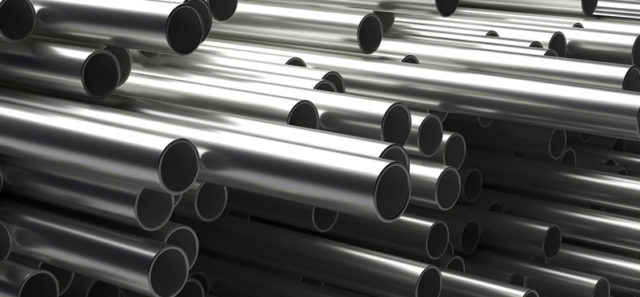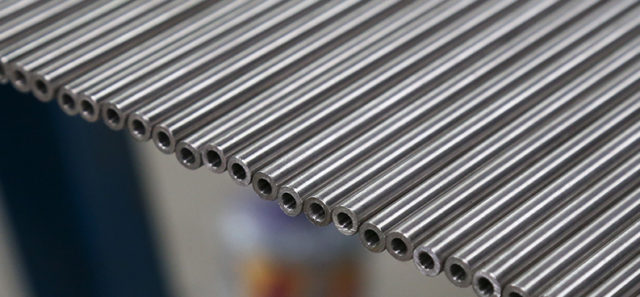Stainless Steel Pipes & Fittings
A stainless steel pipe system is installed solely for carrying corrosive or sanitary fluids, slurries, and gases, particularly where high pressures, high temperatures, or corrosive environments are involved. Due to stainless steel’s aesthetic properties, stainless steel pipe is also used in various architectural applications.
Stainless steel pipe can be generally defined as a heavy wall thickness tubing, with dimensions as specified by the American National Standards Institute (ANSI). Pipe dimensions are specified by outside diameter – indicated by the NPS (imperial) or DN (metric) designator and sometimes confusingly referred to as the ‘nominal bore’ – and wall thickness, reflected in the schedule number. ASME B36.19M covers these dimensions.
KASproc Technologies supplies all sorts of Stainless steel pipes and fittings in an annealed condition to facilitate fabrication and ensure the best corrosion resistance.

Seamless Pipes
Seamless stainless steel pipes are produced from hollow billets, which are pierced then usually cold drawn until they reach the final desired pipe size, then annealed.
A Standard seamless pipe is supplied in nominal lengths of 6.1 meters to DN 150 (NPS 6) and above this in random lengths.

Instrumentation tubes
Impulse sensing lines are the lines containing process fluid which run between the sensing instruments and process tapping points, and are usually made of tubing/piping, valves, and tube fittings.
A tube is a hollow product of a round or any other cross-section having a continuous periphery. Round tube size may be specified with respect to any two, but not all three, of the following: Outside diameter, inside diameter, wall thickness; type K, L, and M copper tube (See section 6 for details) may also be specified by nominal size and type only
We provide a seamless and effective service of impulse tubing installation. We ensure handling of the tube is done very carefully to avoid scratches and protect the finish of the tubes.
Stainless Steel Flanges
A flange is a ring of steel that is either forged, cut from a plate, or rolled. It is designed to connect sections of pipe or to join pipe to a pressure vessel, valve, pump, or other integral flanged assemblies.
Flanges are joined to each other by bolting and are joined to the piping system by welding or threading (or loose when stub ends are used).
The basic types of flanges are:
- Slip-on
- Blind
- Weld neck
- Threaded
- Socket weld
- Lap joint
- Orifice
Seamless Buttweld Fittings
A buttweld fitting is a weldable pipe fitting that allows for change of direction of flow, to branch off, reduce pipe size or attach auxiliary equipment. The common materials for butt weld fittings are A234 WPB (A & C also available), High Yield Carbon Steel, Stainless Steel 304 and 316 and Nickel Alloys.
A piping system using butt welding fittings has the following advantages :
- Welding a fitting to the pipe means that it is permanently
- The continuous metal structure formed between pipe and fitting adds strength to the system.
- Smooth inner surface and gradual direction changes reduce pressure losses and turbulence and minimise the action of corrosion and erosion.
We adopt the best practices to ascertain the smooth and efficient installation of piping, tubing, and fittings. KASproc Technologies adheres to meeting the clients’ requirements by providing timely service making sure the quality is not compromised.
Steam Piping & Accessories
A Steam Pipe is designed to carry pressurized steam from a boiler to the working components, i.e. the steam engines or turbines. Such piping usually includes valves to control the routing of the steam or to stop the flow altogether.
The role of steam distribution lines is to reliably supply steam of the highest reasonable quality to the steam-using equipment. In order for this to be achieved, condensate must be removed quickly and efficiently through steam traps installed in proper condensate discharge location (CDL) installations
Kasproc Technologies experts follow certain strict guidelines while installing Steam Traps on steam lines and make sure that steam traps operate properly and carefully choose installation locations to make this process coherent and safe.

